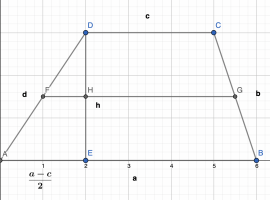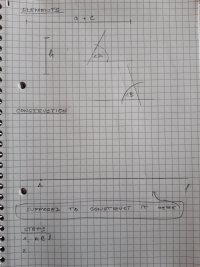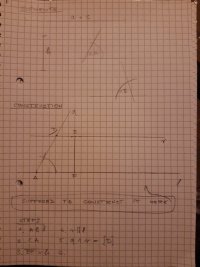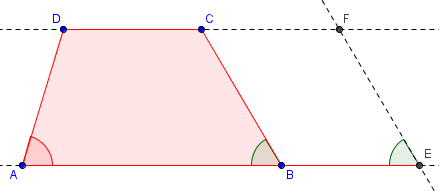rocketFrog
New member
- Joined
- Aug 15, 2022
- Messages
- 15
Hi everyone,
I'm doing a problem where I'm supposed to construct a trapezoid given the sum of parallel bases, a height and the two angles on the longer base. Suppose the trapezoid's vertexes are A, B, C and D, and the bases are a and c, where base a is the longer one. The angles given are the angles A and B.
I'm stuck since I'm not sure about how to use the sum of bases to get any side lengths. I thought I could work something out with the midpoint (since the midpoint = sum of bases / 2) but nothing seems to click.
Here's a picture of an example trapezoid with a midpoint:

Any help would be appreciated!
I'm doing a problem where I'm supposed to construct a trapezoid given the sum of parallel bases, a height and the two angles on the longer base. Suppose the trapezoid's vertexes are A, B, C and D, and the bases are a and c, where base a is the longer one. The angles given are the angles A and B.
I'm stuck since I'm not sure about how to use the sum of bases to get any side lengths. I thought I could work something out with the midpoint (since the midpoint = sum of bases / 2) but nothing seems to click.
Here's a picture of an example trapezoid with a midpoint:

Any help would be appreciated!



